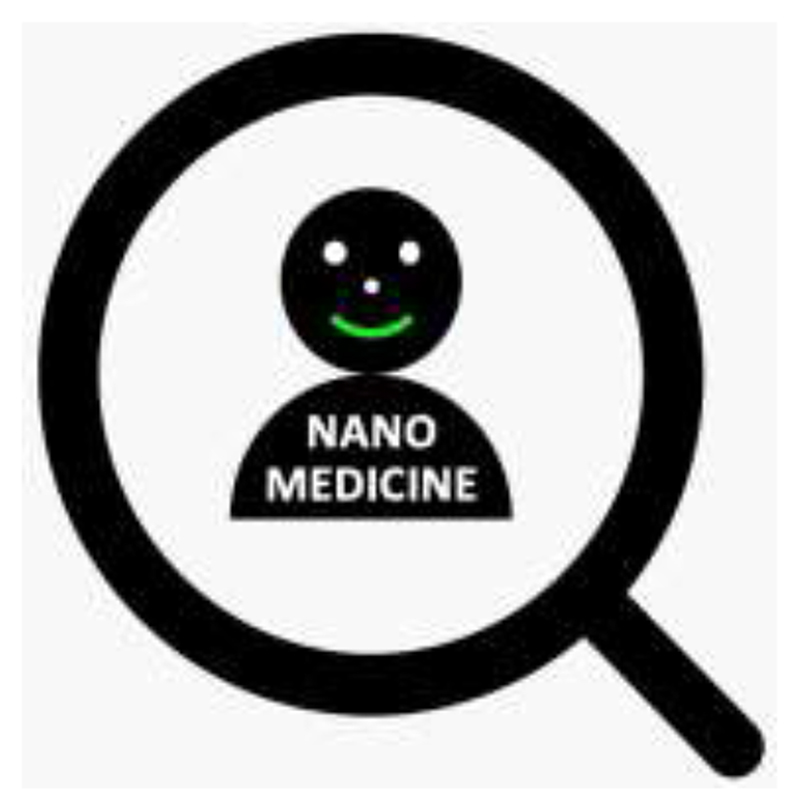Abstract
In recent years, the promise and prospects of nanomedicine have been controversially discussed. We here argue that nanomedicine has undeniably been successful, not only academically and preclinically, but also industrially and clinically. To ensure that we keep on making progress, we have to move away from over-focusing on nano and on materials, towards more holistic approaches that address real medical problems, in a realistic manner.
Graphic abstract.
The nanomedicine field has recently received several big blows. Prominent nanomedicine companies, such as BIND Therapeutics and Cerulean Pharma, filed bankruptcy or saw their shares plummeting after disappointing clinical trial results1,2; a large meta-analysis showed that only 0.7% of the intravenously injected dose of nanoparticles accumulates in tumors3; and the US National Cancer Institute (NCI) decided to discontinue funding for the Centers of Cancer Nanotechnology Excellence (CCNEs) in 20204. To some, these developments signaled “the beginning of the end of the nanomedicine hype”5.
Contrary to the above doomsday perspectives, we argue that nanomedicine is actually on a very positive growth curve. The number of nanomedicine formulations in advanced-stage clinical trials is continuously growing, and several recent nanomedical trials have undeniably been successful, resulting for instance in the FDA approval of Onivyde® (liposomal irinotecan; marketed by Merrimack Pharmaceuticals) for the treatment of pancreatic cancer6, Vyxeos® (liposomal daunorubicin plus cytarabine; co-formulated in a synergistic 1:5 ratio; marketed by Jazz Pharmaceuticals) for acute myeloid leukemia7, and Onpattro® (lipid nanoparticles loaded with siRNA to downregulate transthyretin expression; marketed by Alnylam Pharmaceuticals) for hereditary transthyretin amyloidosis8. The latter is the first drug product to exploit RNA interference in patients. Its good clinical performance is crucially enabled by advances in basic and applied bio-nanotechnology, and it has sparked several large investments and prominent strategic partnerships to start tackling high medical need disorders, such as CNS pathologies9.
With three full cycles of funding, the NCI’s Alliance for Nanotechnology in Cancer (ANC) has been uniquely successful, and unprecedented in duration, among NCI’s high-innovation thematic funding programs. Typically, these programs are only renewed once, resulting in a maximum duration of 10 years. The fact that the ANC was funded for 15 years should therefore be seen as a unique achievement, and the fact that funding was halted after 15 years is the logical consequence of nanomedicine reaching sufficient maturity to compete with other state-of-the-art fields competing for NCI and NIH funding10. The CCNEs have been the central feature and the engine of success of the ANC, providing the necessary lift for the nanomedicine field in its early stages. Since 2005, more than 30 new and abbreviated new drug applications (i.e. NDAs and ANDAs) involving nanomaterials have been approved by the FDA11. This is remarkable for a newly developing field. By comparison, for recombinant proteins and for antibody-based therapeutics, it took almost two decades of developments before the first drugs started to make it to the market12.
The fact that 10 years of preclinical nanomedicine research have - on average - not been able to increase the dose of i.v. injected nanoparticles in tumors beyond 0.7% may seem worrying3. There are, however, many arguments about the correctness of this number, and even more so about its meaning13,14. What is clear is that this seemingly low number has created a lot of negative publicity for the nanomedicine field. Especially when taking into account that already in 2001, a clinical trial in patients with mixed solid tumors reported that 10 out of 12 patients accumulated ≥ 0.7% of the i.v. injected dose of radiolabeled liposomes15. One could ask what we have been doing in almost 20 years of nanomedicine research. But one could also ask what the value of such preclinical meta-analyses on nanoparticle tumor accumulation is. Do they say anything about target site accumulation in patients? Do they predict anything meaningful with regard to clinical and industrial success?
When not over-focusing on the percentages of i.v. injected nanoparticles accumulating in tumors in preclinical study setups, but instead on clinical progress, the nanomedicine field has actually been doing quite well. More than 50 drug products containing nanomaterials are FDA approved for clinical use and more than a dozen of them have been approved in the last decade11,16. This indicates that the nanomedicine field has actually been quite successful.
To propel the field forward, we argue that – among other actions, ideas and incentives17–21 – the over-focus on nano in nanomedicine needs to be better balanced. A bit less towards nano, and a bit more towards medicine. The goal should not be to make ever more (and ever more complex) nanomaterials, but to use nanotechnological tools to promote frontier discoveries and to make an impact on day-to-day clinical practice. The term nano as such is not that important. Patients and clinicians do not care whether a drug is nano or not. As long as it works, and as long as it creates patient benefit.
There are already more than 50 nanomedicine-based drug products on the market that are successfully impacting the health and quality-of-life of patients on a daily basis. And there are 100’s of clinical trials ongoing in which nanomedicine formulations are being tested to try to improve the treatment of high medical need diseases, such as cancer, rheumatoid arthritis, inflammatory bowel disease, cardiovascular diseases, and diabetes. In our opinion, for the relatively young field that nanomedicine is, this should be considered as a great success.
We urge academic, industrial and clinical scientists to recognize and to embrace this success, and to collaborate more intensively and more interdisciplinarily, to promote breakthrough discoveries and to develop individualized and improved nanomedicine treatments for patients in need. This, together with the not at all unexpected recent decision of the NCI to discontinue funding for the CCNEs4,10, will signal the transition of the nanomedicine field into full maturity. And as such, it will mark the end of the beginning of nanomedicine, rather than the beginning of the end.
Highlights.
-
-
Nanomedicine is a very popular and highly productive research field
-
-
Nanomedicine has been successful both academically and industrially
-
-
Future progress requires better balancing between nano and medicine
Acknowledgements
TL gratefully acknowledges financial support by the Aachen Interdisciplinary Center for Clinical Research (IZKF: O3-2), by the European Research Council (Starting Grant NeoNaNo (309495), Proof-of-Concept Grants CONQUEST (680882) and PIcelles (813068), and Consolidator Grant Meta-Targeting (864121)), by the European Union (EU-ERANET-ENMIII: NSC4DIPG (2017-123); and EU-EFRE TAKTIRA (0801767)), and by the German Research Foundation (DFG: GRK2375 (331065168), SFB066 and SFB/TRR57).
Biographies
Biosketch
 Twan Lammers obtained a DSc degree in Radiation Oncology from Heidelberg University in 2008 and a PhD degree in Pharmaceutics from Utrecht University in 2009. In the same year, he started the Nanomedicine and Theranostics group at the Institute for Experimental Molecular Imaging at RWTH Aachen University. In 2014, he was promoted to full professor at the faculty of medicine at RWTH Aachen University.
Twan Lammers obtained a DSc degree in Radiation Oncology from Heidelberg University in 2008 and a PhD degree in Pharmaceutics from Utrecht University in 2009. In the same year, he started the Nanomedicine and Theranostics group at the Institute for Experimental Molecular Imaging at RWTH Aachen University. In 2014, he was promoted to full professor at the faculty of medicine at RWTH Aachen University.
 Mauro Ferrari is a nanoscientist known for leadership in founding the field of nanomedicine and serving as a special expert on nanotechnology for the National Cancer Institute where he was instrumental in establishing the Alliance for Nanotechnology in Cancer. He was President and CEO of the Houston Methodist Research Institute, where he held the Ernest Cockrell Jr. Presidential Distinguished Chair. Since 2020, he has been serving as president of the European Research Council.
Mauro Ferrari is a nanoscientist known for leadership in founding the field of nanomedicine and serving as a special expert on nanotechnology for the National Cancer Institute where he was instrumental in establishing the Alliance for Nanotechnology in Cancer. He was President and CEO of the Houston Methodist Research Institute, where he held the Ernest Cockrell Jr. Presidential Distinguished Chair. Since 2020, he has been serving as president of the European Research Council.
References
- [1].Ledford H. Bankruptcy filing worries developers of nanoparticle cancer drugs. Nature. 2016;533:304–305. doi: 10.1038/533304a. [DOI] [PubMed] [Google Scholar]
- [2].Williams C. Here’s why Cerulean Pharma Inc (CERU) shares are falling 65% Smarter Analyst. 2017 [Google Scholar]
- [3].Wilhelm S, Tavares A, Dai Q, Ohta S, Audet J, Dvorak H, Chan W. Analysis of nanoparticle delivery to tumours. Nat Rev Mater. 2016;1:16014 [Google Scholar]
- [4].Service R. US Cancer institute cancels nanotech research centers. Science. 2019 doi: 10.1126/science.aay0798. [DOI] [Google Scholar]
- [5].Park K. The beginning of the end of the nanomedicine hype. J Control Release. 2019;305:221–222. doi: 10.1016/j.jconrel.2019.05.044. [DOI] [PubMed] [Google Scholar]
- [6].Wang-Gillam A, Li CP, Bodoky G, Dean A, Shan Y, Jameson G, Macarulla T, Lee K, Cunningham D, Blanc J, Hubner R, et al. NAPOLI-1 Study Group. Nanoliposomal irinotecan with fluorouracil and folinic acid in metastatic pancreatic cancer after previous gemcitabine-based therapy (NAPOLI-1): a global, randomised, open-label, phase 3 trial. Lancet. 2016;387:545–557. doi: 10.1016/S0140-6736(15)00986-1. [DOI] [PubMed] [Google Scholar]
- [7].Lancet J, Uy G, Cortes J, Newell L, Lin T, Ritchie E, Stuart R, Strickland S, Hogge D, Solomon S, Stone R, et al. CPX-351 (cytarabine and daunorubicin) liposome for injection versus conventional cytarabine plus daunorubicin in older patients with newly diagnosed secondary acute myeloid leukemia. J Clin Oncol. 2018;36:2684–2692. doi: 10.1200/JCO.2017.77.6112. [DOI] [PMC free article] [PubMed] [Google Scholar]
- [8].Adams D, Gonzalez-Duarte A, O’Riordan W, Yang C, Ueda M, Kristen A, Tournev I, Schmidt H, Coelho T, Berk J, Lin K, et al. Patisiran, an RNAi therapeutic, for hereditary transthyretin amyloidosis. N Engl J Med. 2018;379:11–21. doi: 10.1056/NEJMoa1716153. [DOI] [PubMed] [Google Scholar]
- [9].Sheridon C. Billion-dollar deal propels RNAi to CNS frontier. Nat Biotechnol. 2019;37:702–704. doi: 10.1038/d41587-019-00014-7. [DOI] [PubMed] [Google Scholar]
- [10].Grodzinski P. NCI Centers of Cancer Nanotechnology Excellence (CCNEs) - A full story to set the record straight. J Control Release. 2019;309:341–342. doi: 10.1016/j.jconrel.2019.08.016. [DOI] [PubMed] [Google Scholar]
- [11].D’Mello S, Cruz C, Chen M, Kapoor M, Lee SL, Tyner K. The evolving landscape of drug products containing nanomaterials in the United States. Nat Nanotechnol. 2017;12:523–529. doi: 10.1038/nnano.2017.67. [DOI] [PubMed] [Google Scholar]
- [12].Reichert J. Trends in development and approval times for new therapeutics in the United States. Nat Rev Drug Discov. 2003;2:695–702. doi: 10.1038/nrd1178. [DOI] [PubMed] [Google Scholar]
- [13].Lammers T, Kiessling F, Ashford M, Hennink WE, Crommelin DJA, Storm G. Cancer nanomedicine: is targeting our target? Nat Rev Mater. 2016;1:16069. doi: 10.1038/natrevmats.2016.69. [DOI] [PMC free article] [PubMed] [Google Scholar]
- [14].McNeil S. Evaluation of nanomedicines: stick to the basics. Nat Rev Mater. 2016;1:16073 [Google Scholar]
- [15].Harrington K, Mohammadtaghi S, Uster P, Glass D, Peters A, Vile R, Stewart J. Effective targeting of solid tumors in patients with locally advanced cancers by radiolabeled pegylated liposomes. Clin Cancer Res. 2001;7:243–54. [PubMed] [Google Scholar]
- [16].Bobo D, Robinson KJ, Islam J, Thurecht KJ, Corrie R. Nanoparticle-based medicines: a review of FDA-approved materials and clinical trials to date. Pharm Res. 2016;33:2373–2387. doi: 10.1007/s11095-016-1958-5. [DOI] [PubMed] [Google Scholar]
- [17].Pelaz B, Alexiou C, Alvarez-Puebla R, Alves F, Andrews A, Ashraf S, Balogh L, Ballerini L, Bestetti A, Brendel C, Bosi S, et al. Diverse applications of nanomedicine. ACS Nano. 2017;11:2313–2381. doi: 10.1021/acsnano.6b06040. [DOI] [PMC free article] [PubMed] [Google Scholar]
- [18].Lammers T. Macro-nanomedicine: Targeting the big picture. J Control Release. 2019;294:372–375. doi: 10.1016/j.jconrel.2018.11.031. [DOI] [PubMed] [Google Scholar]
- [19].Van der Meel R, Sulheim E, Shi Y, Kiessling F, Mulder W, Lammers T. Smart cancer nanomedicine. Nat Nanotechnol. 2019;14:1007–1017. doi: 10.1038/s41565-019-0567-y. [DOI] [PMC free article] [PubMed] [Google Scholar]
- [20].Wolfram J, Ferrari M. Clinical cancer nanomedicine. Nano Today. 2019;25:85–98. doi: 10.1016/j.nantod.2019.02.005. [DOI] [PMC free article] [PubMed] [Google Scholar]
- [21].Crommelin D, Hoogevest P, Storm G. The role of liposomes in clinical nanomedicine development. What now? Now what? J Control Release. 2020;318:256–263. doi: 10.1016/j.jconrel.2019.12.023. [DOI] [PubMed] [Google Scholar]



